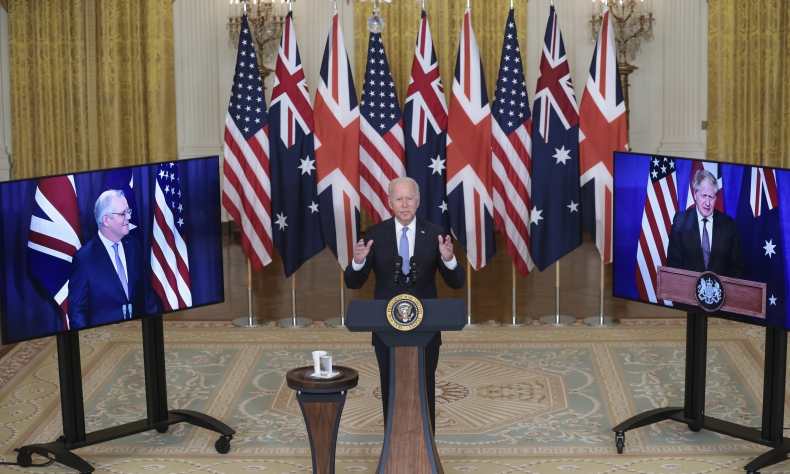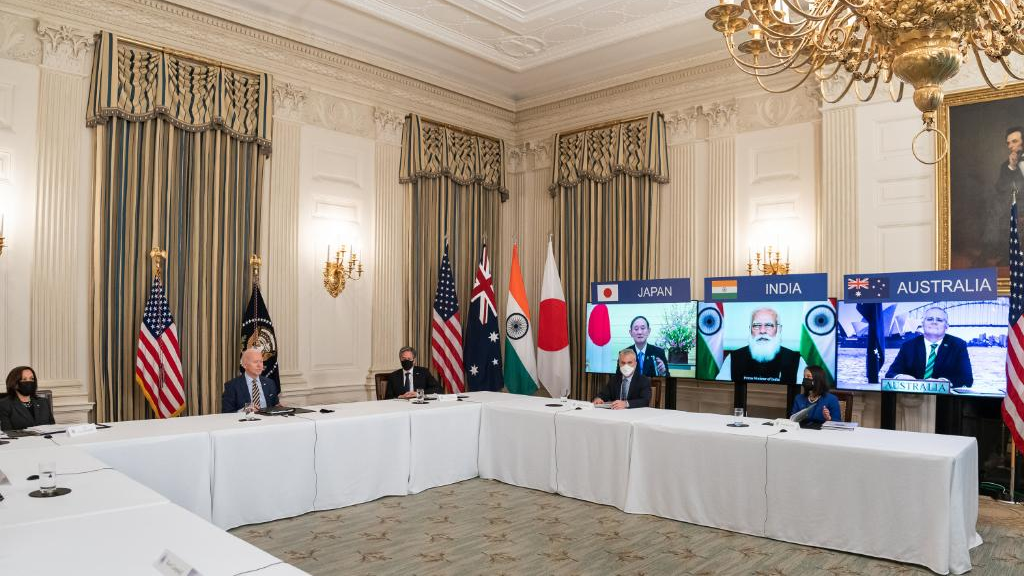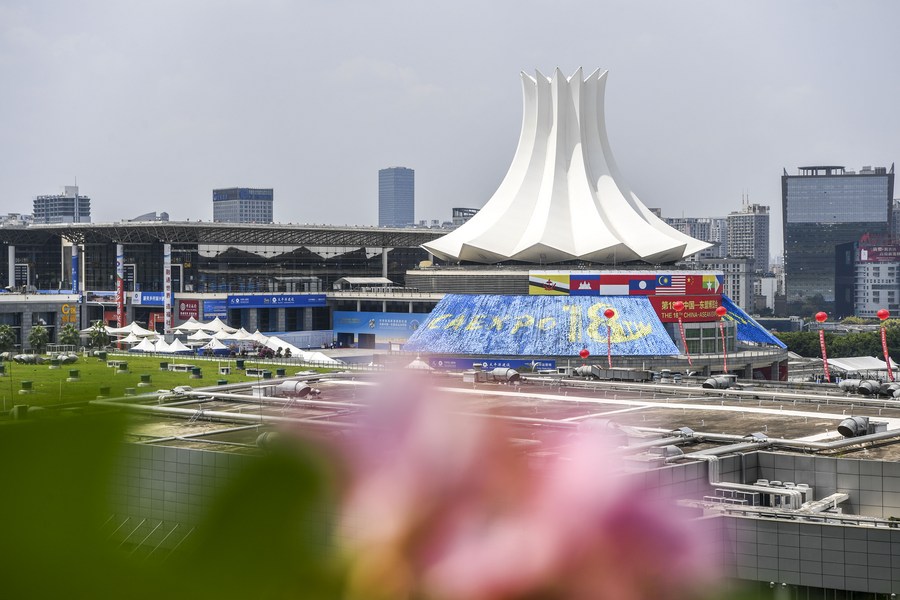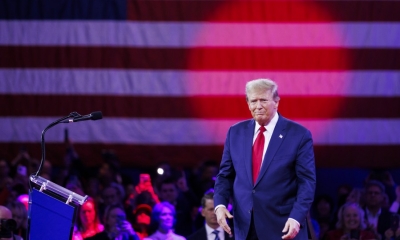AUKUS: Encircle, Contain, and Suppress China

Washington must get a grip on itself. Irrational hysteria is leading some policymakers and politicians to think that war against China is necessary and that the US will prevail, a totally wrong fantasy.
AUKUS is the latest Washington-led Western move to encircle, contain, and suppress China. Although billed as a bold new security initiative it is in fact just a continuation of the militarization of the Pacific.
Western strategists twist themselves into knots with ever more fanciful notions serving as pretexts for hard-power containment of China. First, the encirclement is prepared with bases and facilities. With encirclement and containment in place, the stage is set for suppression.
Suppression is a process that can be undertaken during peacetime as well as during war. Peacetime suppression can be led by economic warfare techniques such as trade and tech wars. Psychological warfare can be applied in the form of information warfare. Political and diplomatic pressures can be applied against the target country as well as against its neighbors and friends.
AUKUS is the most recent innovation in Western containment and suppression strategy focusing on the Pacific.
Western strategy during the last decade was updated using the geographical fiction called the “Indo-Pacific.” Looking at the globe as it has been depicted for centuries, the Pacific Ocean is distinct from the Indian Ocean. Is there an “Indo-Atlantic”? Is the planet “Indo-Global”?
The “Indo-Pacific” slogan is a device that ties into the so-called Quadrilateral Security Dialogue (Quad) alignment. This combination brings together the US, Australia, Japan, and India. The alignment was a new addition to the existing security architecture in the Pacific orchestrated by Washington during US President Barack Obama’s administration.

While the Obama administration first referred to its new Pacific strategy as the “Pivot” this was later changed to “Rebalancing.” Rebalancing meant shifting US military power — sea, air, and land — to the Pacific region to confront a rising China.
Is there a bigger picture?
Yes. The bigger picture is the Western alliance structure versus China. The older Western alliance structure has added the Quad alignment and now the AUKUS military cooperation deal.
Does NATO play a role against China?
Yes. The North Atlantic Treaty Alliance (NATO) founded in 1949 expanded its horizons after the fall of the Soviet Union in 1991. Rather than dissolve itself, as the Warsaw Pact did, it sought new horizons for expansion outside its original mission area, i.e., the North Atlantic. NATO involvement in the Afghan war is an example of such “out of area” activity. NATO’s humiliation in Afghanistan does not stop its expansionist objectives.
But there is more to NATO’s global expansion. Take the Partnership for Peace (PfP) program. It included Central Asian countries Kazakhstan, Tajikistan, Uzbekistan, Kirghiz Republic, and Turkmenistan.
NATO developed ties with Japan in 1992 along with Central Asian nations.
NATO’s Mediterranean Dialogue established in 1994 included Algeria, Egypt, Israel, Jordan, Mauritania, Morocco, and Tunisia. NATO’s Istanbul Cooperation Initiative, announced in 2004, included Bahrain, Qatar, the United Arab Emirates, and Kuwait with Saudi Arabia and Oman showing interest.
NATO’s reach into the Pacific came in the form of “Tailored Cooperation Packages” which involved Japan, Australia, New Zealand, Singapore, and South Korea. This led to these nations cooperating in the failed Afghanistan war thus extending NATO reach through Central Asia to the Pacific Rim.

How does AUKUS fit in?
First, it is important to recall the context. The US has active defense treaties with Australia and New Zealand (ANZUS) and the defense treaty with Japan both Cold War treaties from 1951. Also, the US has a defense treaty with South Korea from 1953. This architecture is referred to as the “Hub and Spokes” alliance system with the US as the Hub.
This Pacific alliance system forms part of the overall Western strategy of containment of the Eurasian landmass. NATO in Europe was designed to contain Russia but since has globalized.
Into this Pacific context as noted above, there has been a NATO expansion as well as new components added such as the Quad and most recently AUKUS. While Quad appears to be for the time being a way to strengthen diplomatic, political, and economic ties, a military component is in the background.
AUKUS, on the other hand, is a military arms deal that strengthens the pre-existing ANZUS treaty system and adds the United Kingdom into that alliance mix. The controversial AUKUS arms deal involves arming Australia with nuclear-powered submarines and potentially with nuclear weapons down the road.
Australia had signed an agreement with the French to build diesel-powered submarines. French submarines are nuclear-powered so the French had to redesign their submarines to meet Australian demands. But then, Australia under US pressure dropped the French connection and switched to a nuclear submarine deal with the US and the UK.
Of course, the switch raised a number of contentious issues such as promoting an arms race in the Pacific.
France lost a multibillion-dollar arms deal and is upset. But Australia has no nuclear power infrastructure so that will take a decade or so to develop. The nuclear submarine deal raises the issue of nuclear proliferation and a number of countries in the region such as New Zealand, Indonesia, and Malaysia, naturally are concerned. Singapore also expressed concern.

What about ASEAN?
The Quad and AUKUS arrangements appear to be aimed at weakening ASEAN. ASEAN unity is a key factor needed to give weight to this regional organization involving some 700 million people.
Some argue that Washington intends to break up ASEAN by forcing members to choose between the US and China in a zero-sum game. Washington hopes to press Singapore, the Philippines and Vietnam into its corner.
As to the nuclear proliferation concern, AUKUS flies in the face of strongly held ASEAN values as expressed in the Treaty of Southeast Asian Nuclear Free Zone. Washington’s continuing militarization of the Pacific subverts Asian values for regional peace and stability. Washington is not concerned about regional sensitivities.
Not only is Washington entranced by AUKUS there are new think tank strategies being cooked up to further contain China. Interestingly, in the last few weeks there has been a new buzz about defending Taiwan by means of a “strategy of denial.” The concept is to create a new updated strategy to better defend Taiwan while building up its military capabilities.
The strategy of denial emphasizes suppression of China’s ability to wage war to include navigation in the Western Pacific. Nothing really new as it hinges on the old “first island chain” concept from World War II but dressed up with media and think tank hype now it circulates in a Washington hysterical about a “China threat.”
AUKUS fits neatly into this new buzz in Washington about Taiwan and a US strategy of denial. Think tankies of AUKUS in Washington are falling all over themselves praising this new concept. No doubt they are salivating over the prospect of millions of dollars of funding from the US military-industrial complex and from Taiwan for their think tanks and new anti-China research projects. For the tankies, creating a never-ending succession of “scenarios” to justify increased defense spending relates directly to their own jobs and salaries.
Washington must get a grip on itself. Irrational hysteria is leading some policymakers and politicians to think that war against China is necessary and that the US will prevail, a totally wrong fantasy. Some extremist circles are going so far as to recommend preventive war before China gets too strong. It is time to reduce US hysteria against China and pursue ways to promote peace and stability in the Pacific before it is too late.
The article reflects the author’s opinions, and not necessarily the views of China Focus.
 Facebook
Facebook
 Twitter
Twitter
 Linkedin
Linkedin
 Google +
Google +







